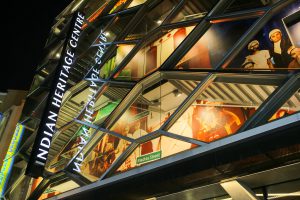Hidden Heritage: A series exploring Singapore’s minority South Asian communities
January 25, 2021

Thaipusam is a vibrant festival celebrated by Hindus to seek blessings, fulfil vows, and offer gratitude. As part of the ceremony, devotees transport a wooden ceremonial structure known as kavadis. Part of the kavadis is pierced into the skin of the devotee while being transported, and is one of the more extreme forms of the Thaipusam procession.
In Singapore, most Hindus who celebrate Thaipusam are Tamils, who make up the largest portion of the ethnicity labelled as ‘Indian’ under the ‘CMIO’ (Chinese, Malay, Indian, Others) model. Singapore incorporates the CMIO model to categorize its people into these four main groups. The Tamils and a few smaller ethnic groups were subsumed as ‘Indian’ under the CMIO framework. These smaller ‘hidden’ ethnic groups have unique identities, religions, and cultures that are separate from the Tamils but tend to be associated with them because of this categorization method.
In ‘Hidden Heritage: A series exploring Singapore’s minority South Asian communities’, Associate Professor Rajesh Rai and Senior Lecturer Jayati Bhattacharya (both NUS South Asian Studies) seek to reveal these ‘hidden’ ethnicities. They will conduct interviews, archival, and secondary research to expose the plurality contained within the ‘Indian’ ethnic category. Research will be undertaken on the Bengalis, Gujaratis, Hindustanis (Uttar Pradeshis), Telugus, and Tamil Catholics to understand how these micro-communities and their identities were formed in the specific socio-historical context of colonial and post-colonial Singapore.
This study initiates the first phrase of a longer series that features South Asian micro-communities categorized as ‘Indian’ in Singapore. Findings will feature the everyday experiences of these micro-communities and demonstrate the unique and shared historical trajectories and cultural values made while interacting with other ‘Indian’ and non-‘Indian’ communities in Singapore. They will be made accessible to the public through printed booklets and videos which will introduce the ‘hidden’ communities and feature interviews with its members.
